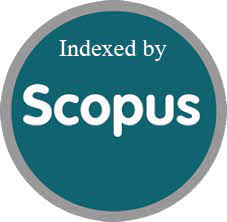Kluth type I3 and intra-abdominal variants of esophageal atresia: A case series
DOI:
https://doi.org/10.52783/jns.v9.530Keywords:
Esophageal atresia, GE junction web, Intra-abdominal, Kluth type I3, Long upper pouch, VariantsAbstract
Background: Esophageal atresia (EA) encompasses a group of congenital anomalies (one in 2500 live births) comprising an interruption in the continuity of the esophagus combined with or without a persistent communication with the trachea. It is confirmed by passing no. 10 sterile, blunt‑tipped red rubber catheter into the esophagus, which gets failed to pass beyond 10 cm.
Case Series: We describe two male neonates in whom the infant feeding tube could be passed to 18-20 cm in the upper esophageal pouch. A babygram with a blunt-tipped soft red rubber catheter in situ confirmed the esophageal atresia (EA) with the long upper pouch in the first case and EA with obstruction at the gastroesophageal junction in the second one.
Conclusion: The importance of recognizing rare Kluth variants of EA is stressed. A low threshold for performing a red rubber catheter test is stressed.
Downloads
Metrics
References
Alexander A, Millar AJ. The passage of a nasogastric tube does not always exclude an oesophageal atresia. Afr J Paediatr Surg. 2009;6:47-8.
Gupta R, Sharma P, Goyal RB. Kluth type IIIb6 esophageal atresia: Diagnostic dilemma and pitfalls of using infant feeding tube. J Indian Assoc Pediatr Surg. 2018; 23:96-9.
Kluth D. Altas of esophageal atresia. J Pediatr Surg 1976;11:901-19.
Gupta R, Sharma P, Shukla AK, Mehra S. Kluth type IV3 membranous esophageal atresia at middle one-third of esophagus: An extremely rare entity. J Indian Assoc Pediatr Surg. 2017; 22:254-6.
Pai GK, Pai PK, Kini AU, Rao J. Membranous type of esophageal atresia at the cardiac end of the esophagus: a case report. J Pediatr Surg 1987;22(11);986-7.
Hadley GP, Wiersma R. Membranous atresia of the intra-abdominal esophagus: a case report. S Afr Med J 1990;77:210-1.
Shawyer AC, Flageole H. An unusual case of an intraabdominal esophageal atresia without tracheoesophageal fistula. J Pediatr Surg Case Rep. 2013; 1:220-2.
Saleem M, Iqbal A, Ather U, Haider N, Talat N, Hashim I, et al. 14 Years' experience of esophageal replacement surgeries. Pediatr Surg Int. 2020; 36:835-41.

Published
How to Cite
Issue
Section
License
Copyright (c) 2020 Rahul Gupta, Rozy Paul, Manika Boipai, Priya Mathew, Ankit Singh, Bhairu Lal Gurjar, Arun Kumar Gupta

This work is licensed under a Creative Commons Attribution 4.0 International License.
You are free to:
- Share — copy and redistribute the material in any medium or format
- Adapt — remix, transform, and build upon the material for any purpose, even commercially.
Terms:
- Attribution — You must give appropriate credit, provide a link to the license, and indicate if changes were made. You may do so in any reasonable manner, but not in any way that suggests the licensor endorses you or your use.
- No additional restrictions — You may not apply legal terms or technological measures that legally restrict others from doing anything the license permits.










